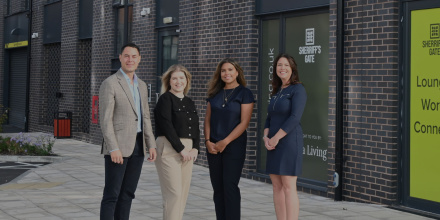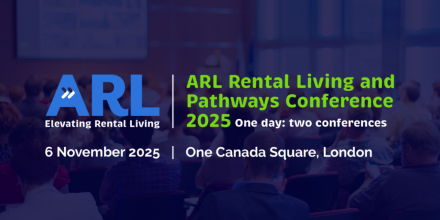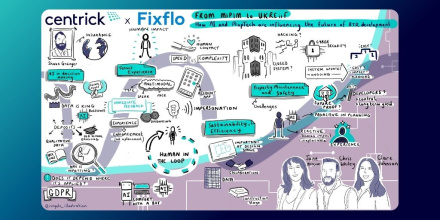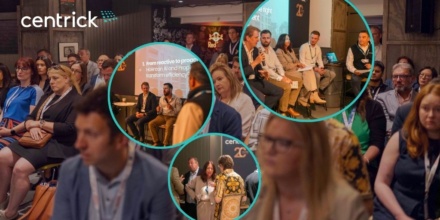Liverpool’s build-to-rent sector is creating a new level of resident satisfaction as renters embraces the many benefits of living in energy efficient homes that offer a range of facilities including gyms, co-working amenities, EV charging and parking, according to new research by property specialist Centrick. Centrick, which was established in 2005, specializes in Building & Estate Management, BTR Portfolio Management, PRS Portfolio Management and Professional Service & Valuation in addition to Land, New Homes, and Investment services.
The Love Where You Live research takes an in-depth look at Britain’s booming build-to-rent (BTR) market, the factors driving its growth, and why some renters and investors are turning their backs on the traditional private rented sector in favour of high quality, purpose-built BTR developments.
Unlike traditional apartment buildings, BTR properties focus on creating engaged, fully rounded communities with amenities and features like screening rooms, private dining facilities, hosting kitchens, residents’ lounges and bookable services built in, says the Love Where You Live research published by national property specialists Centrick.
The report says that Liverpool, which has a growing number of BTR development, is turning to BTR in the face of rapidly increasing rents driven by limitation in supply and growth in demand. The city, which is forecast to grow to 531,000 by 2030, from inward migration, a thriving undergraduate and post graduate population and an influential younger demographic, Liverpool is attracting significant investment in BTR developments.
From Pall Mall Press which completed in January 2024 to Baltic Yard and The Lexington which launched in 2021 Liverpool is building and planning for BTR across the city. Predominantly centred around the docks and waterfront the Liverpool BTR market is still relatively small, but alongside inward investment and regeneration projects is expected to start attracting additional attention.
Liverpool’s rental market, often dubbed “a landlords dream” grew between 10 and 12% in 2023 despite Liverpool residents reporting a mean rent burden of between £900-£1000, marginally lower than the national average of £1000-£1100.
This growth in rental values and increasing availability of newer BTR developments is creating movement in both the BTR and PRS sectors. Liverpool residents ranked Lounges/Socialising spaces as their number one factor in importance, the only region to do so, with over 30% of residents willing to pay more for this feature. Social and external amenities whilst they ranked highly across Liverpool were overshadowed by the green credential that Liverpudlians are looking for. Energy Efficiency and EV charging topped the features that have residents reaching for extra rental spend, with 40% and 39% of responders saying they would pay more for this feature.
There are marked differences in the preferences of PRS and BTR residents across Liverpool. Those that identify as currently living in a BTR development stated they would be more likely to pay extra for gym and fitness facilities. On the other hand, energy efficiency was most likely to get Liverpool PRS residents reaching for extra budget.
Garden space ranked highly for both groups, whereas parking facilities were valued much more highly within BTR. Social and communal facilities – which fared mid-table for both groups – reflect the wider national statistics, whereas private dining and meeting facilities have a lower perceived value. In fact, only 27% of respondents stated that they would be willing to pay more for this feature, which is the lowest of all regions surveyed.
Liverpool residents reported the highest level of satisfaction with the amenities at their current rental development. Over 87% of residents claimed they were satisfied with the amenities available compared with a national average of 82%. Despite this renters living in private rented property were much more likely to be unsatisfied overall with an overall Net Promoter Score of -17, BTR renters fared much better at +1, boasting the second highest score nationally.
According to the report, the combination of energy efficient homes and community features is working, with just 1 in 10 current BTR residents considering going back to the private rented sector.
Energy efficiency has emerged as the most important factor when choosing a new home as renters continue to grapple with the cost-of-living crisis, according to a major report on the future of build-to-rent (BTR) and private rented sector property (PRS) in the UK.
Over 83% of renters in both BTR and PRS property reported that energy efficiency was important to them in their rental property with the availability of garden space and lounge/socialising space completing the renters top three wish-list. Parking and pet friendliness ranked 4th and 5th respectively says the research.
The research and report focuses on six cities – London, Birmingham, Manchester, Liverpool, Sheffield, and Southampton – where BTR is increasing rapidly in popularity with a wide demographic of residents opting to rent instead of buy. The research suggests that renters have significant and varied preferences, with generational and locational trends emerging strongly. Renters show a significant propensity for choice and movement, with over 50% of renters planning to move from their current property within the next 12 months.
Key findings include:
Birmingham – 87% of renters satisfied or very satisfied with current amenities.
Manchester – Most likely to value pet friendliness.
Sheffield – 40% of renters willing to pay more for parking.
London – 88% of renters get on well or very well with the neighbours.
Liverpool – 36% of renters willing to pay more for EV charging facilities.
Southampton – 29% residents planning to stay put for 18+ months.
Centrick founder James Ackrill said:
“In recent years, the residential real estate landscape has witnessed the transformative trend known as Build to Rent housing. This innovative approach to housing investment, construction and management has swiftly emerged as a dynamic and relevant force in the housing market.
“Our objective is to dig into real world trends from real renters and explore the path forward for both those who seek to invest in BTR developments and those who aspire to call them home. This study is driven by the recognition that BTR is more than a mere housing solution; it is a concept that, when well-executed, can redefine the way we relate to the places we live. It carries the potential to create not just spaces, but communities where people feel a genuine connection to their surroundings, fostering a sense of belonging and happiness in their daily lives.”
He added:
“Love Where You Live is more than a research paper; it’s a testament to the transformative power of home, and a celebration of the boundless potential of Build to Rent housing in redefining the way we live, love, and create our lives in the future.”
The study also asked which amenities and features residents would be willing to pay a higher rent for. Parking ranked most highly with 38.69% of responders citing this as the singular feature they would be willing to pay more for. Garden space and energy efficiency also featured highly at 37% and 36% respectively, echoing what respondents cited as their most important features. Gym and fitness facilities and EV charging are cited at positions four and five respectively.
With over 80% of residents surveyed responding that energy efficiency was important or very important, it is obvious that this is the key feature for the majority of renters across both BTR and PRS when considering their next move. In fact, a mere 5.59% of responders stated that energy efficiency was “not important at all”, a testament to the importance of energy costs and sustainability to all residents. Birmingham-based Centrick, which also has offices in London, Manchester, Sheffield, Gerrards Cross and Fareham has grown consistently since its inception by successfully prioritising innovation, expertise, and building trusted relationships with its clients to deliver high quality service and results. First opening its doors in 2005, the agency now has over 23,500 properties across the UK on its books and manages over £3.5 billion in client assets.










